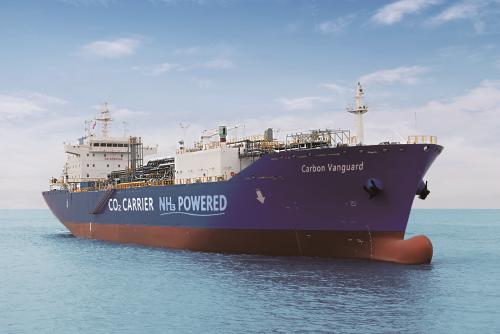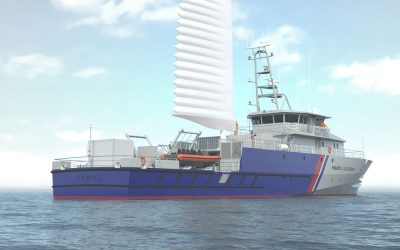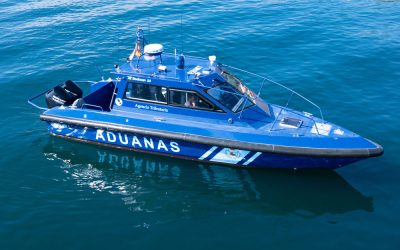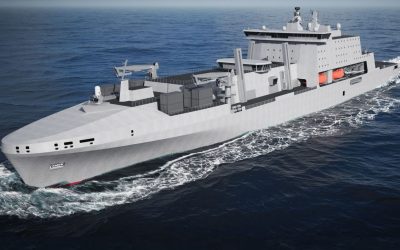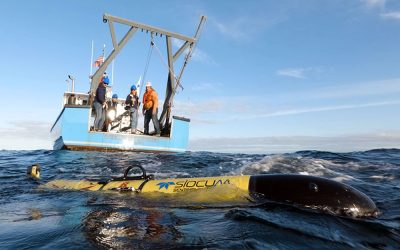The ship type was independently developed and designed by Jiangnan Shipbuilding to meet the design requirements of ammonia fuel ’ready’. It is equipped with 3,500m3 of ammonia fuel storage tanks, which can achieve ‘zero-carbon’ operation throughout the voyage, thereby achieving the goal of no carbon emissions while transporting carbon. Moreover, the design of the ship’s cargo system meets the requirements of the combined installation of CO2, anhydrous ammonia and liquefied petroleum gas (LPG) at the same time, which improves the flexibility of ship operations. The successful R&D and design of this type of ship further demonstrates Jiangnan Shipbuilding’s independent research and development capabilities in the field of a full range of liquefied gas ships, while maintaining the shipyard’s leading position in the new ship type market facing the ‘dual carbon’ goal (transporting liquid CO2 without itself emitting any additional carbon).
Temperature controls
The CO2 is sealed in a storage tank on the ship in liquid form before being transported. However, due to frequent extreme weather at sea and excessively high or low ambient temperature outside the tank, it is easy to affect the form of the contained CO2. Once the temperature reaches -56°C, the triple point of carbon dioxide is attained, that is, the coexistence of solid, liquid, and gas states. According to the gas-liquid ratio of 1:200, the gaseous state or solidification of carbon dioxide will not only challenge the storage tank’s ability to withstand excessive pressure, but can also easily cause some vapour or impurities to mix with the CO2 as it changes between states, compromising the safety of transportation. In this regard, Jiang Wen, a senior engineer at the Economic Research Centre of China Shipbuilding Corporation, comments: “Accurately controlling the temperature and pressure in the cabin is the biggest technical difficulty for a CO2 carrier.”
The cargo tank developed by Jiangnan Shipbuilding is a semi-cooled and semi-pressurized C-type tank. For CO2 boil-off gas, it provides two alternatives: CO2 reliquefaction and liquid cargo tank pressure accumulation. In particular, the ship’s cargo tank can safely convert solidified and gaseous CO2 back to the liquid state, or even if the CO2 appears gaseous and solidified, while withstanding the resulting pressure changes and continuing to achieve safe transportation. The shipowner can choose the most economical option among the two options according to different voyage requirements and initial investment budget.
With the peaking of carbon emissions, the approach of carbon neutrality, and the development of carbon capture and storage technologies, zero-carbon carbon dioxide transport ships will usher in broad application prospects. On 28 August 2021, China National Offshore Oil Corporation announced that the official launch of the country’s first offshore CO2 storage demonstration project. The facility will permanently store more than 1.46 million tons of CO2 in the submarine reservoirs of the Pearl River Mouth Basin in the South China Sea.
At present, there are many potential pathways being explored for carbon capture and solidification, including biological, physical, and chemical absorption methods, ore carbonisation, seawater carbon sequestration, and mine storage. Regardless of the technology, the transfer and transportation of CO2 will be an important part of that infrastructure, with water-based transportation being a critical component.
As a leader in the design and construction of a full range of liquefied gas ships in China, Jiangnan Shipbuilding has successfully developed cryogenic containment systems that have covered International Maritime Organization (IMO) A, B and C types and GTT Mark III membrane types. While developing mainstream ship types corresponding to various cryogenic containment systems, Jiangnan Shipbuilding is also paying attention to the emergence of cutting edge technologies and the development of derivative ship types. In 2012, Jiangnan Shipbuilding cooperated with a large foreign shipping company, classification society and liquefied gas system integrator to carry out liquefied CO2 transportation using a 22,000m3 of semi-cooled semi-pressurised C-chamber liquefied gas carrier.
